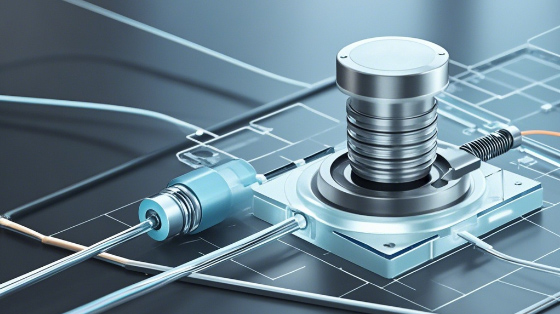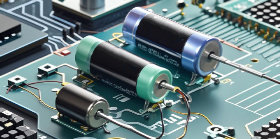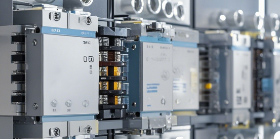Sensors: The Unsung Heroes of the Digital Age
2024/10/25 11:36:28
In today's highly connected and technologically advanced world, sensors play an indispensable role in a wide range of applications, from everyday consumer electronics to complex industrial processes and scientific research. These unassuming yet highly sophisticated devices are the unsung heroes of the digital age, quietly gathering data and enabling a host of intelligent functions that have transformed the way we live, work, and interact with the environment.
Sensors are essentially devices that detect and respond to physical or chemical stimuli. They convert these stimuli into electrical signals that can be processed and analyzed by other electronic components or systems. The types of stimuli that sensors can detect are incredibly diverse, ranging from temperature, pressure, and humidity to light, sound, motion, and chemical composition.
One of the most common applications of sensors is in consumer electronics. Smartphones, for example, are equipped with a plethora of sensors that enhance their functionality and user experience. These include accelerometers, gyroscopes, and magnetometers, which detect motion and orientation and enable features such as screen rotation, gaming controls, and step counting. Proximity sensors detect the presence of objects near the phone and automatically turn off the screen to save power and prevent accidental touches. Ambient light sensors adjust the screen brightness based on the surrounding lighting conditions, providing optimal visibility while conserving battery life.

In addition to consumer electronics, sensors are also widely used in the automotive industry. Modern cars are equipped with an array of sensors that monitor various aspects of the vehicle's performance and safety. These include tire pressure sensors, which alert the driver to low tire pressure and help prevent blowouts and improve fuel efficiency. Oxygen sensors measure the amount of oxygen in the exhaust gas and help the engine control unit adjust the fuel-air mixture for optimal combustion. Anti-lock braking systems (ABS) use wheel speed sensors to detect when a wheel is about to lock up and automatically apply and release the brakes to prevent skidding. Advanced driver assistance systems (ADAS), such as lane departure warning and automatic emergency braking, rely on cameras, radar, and lidar sensors to detect objects and obstacles on the road and assist the driver in avoiding collisions.
The industrial sector is another major area where sensors play a crucial role. In manufacturing plants, sensors are used to monitor and control production processes, ensuring quality and efficiency. Temperature and pressure sensors are used to monitor the conditions in industrial furnaces and reactors, while flow sensors measure the flow rate of liquids and gases in pipelines. Vibration sensors detect abnormal vibrations in machinery, indicating potential mechanical problems and enabling predictive maintenance to prevent costly breakdowns. In the oil and gas industry, sensors are used to monitor wellhead pressure, flow rate, and temperature, as well as to detect leaks and ensure safety.
In the field of healthcare, sensors are revolutionizing medical diagnosis and treatment. Wearable sensors, such as fitness trackers and smartwatches, can monitor a person's heart rate, activity level, and sleep patterns, providing valuable insights into their overall health and fitness. Medical sensors, such as blood glucose sensors, blood pressure monitors, and electrocardiogram (ECG) sensors, enable continuous monitoring of vital signs and early detection of health problems. In hospitals, sensors are used in patient monitoring systems to track vital signs, detect falls, and ensure patient safety.
Sensors are also playing an increasingly important role in environmental monitoring and sustainability. Air quality sensors measure pollutants such as particulate matter, carbon monoxide, and nitrogen dioxide, providing real-time data on air quality and helping to identify sources of pollution. Water quality sensors detect contaminants in water sources, enabling early detection and prevention of waterborne diseases. Smart meters equipped with sensors can measure electricity, gas, and water consumption, helping consumers and utilities manage energy and water resources more efficiently.
The development of advanced sensor technologies is driven by several factors. One of the key drivers is the increasing demand for miniaturization and integration. As electronic devices become smaller and more portable, there is a need for sensors that are smaller in size, consume less power, and can be integrated into these devices seamlessly. This has led to the development of microelectromechanical systems (MEMS) sensors, which combine mechanical and electrical components on a microscopic scale and offer high performance and reliability in a small package.
Another important driver is the need for higher accuracy and sensitivity. In many applications, such as scientific research and medical diagnosis, accurate measurement of physical and chemical parameters is crucial. Advances in materials science and sensor design have led to the development of sensors with higher sensitivity, selectivity, and stability, enabling more accurate and reliable data collection.
The increasing availability of wireless communication technologies is also fueling the growth of sensor applications. Wireless sensors can be easily deployed in remote locations and can transmit data wirelessly to a central monitoring station, eliminating the need for costly wiring and installation. This has led to the development of wireless sensor networks (WSNs), which consist of a large number of interconnected sensors that can monitor and control a wide area.
In conclusion, sensors are the unsung heroes of the digital age, enabling a wide range of intelligent functions and transforming the way we live and work. From consumer electronics to industrial processes, healthcare, and environmental monitoring, sensors are playing an increasingly important role in our lives. As technology continues to advance, we can expect to see even more innovative sensor applications that will further enhance our quality of life and drive sustainable development.




